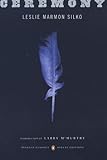The inexorable drowning of the immigrant narrator in Junot Díaz’s text begins from the very first page. Life is maintained due to artificial breathing devices, language being the major tool. Díaz’s collection of short stories patches together moments from the life of Dominican American immigrants into a bigger narrative depicting fragile existence in a foreign culture. The narrators of the short stories are diagnosed with constant sense of displacement in a permanent condition of fatherlessness; they suffer an invisible life under their masks being drowned by the products of a new prolific and loud culture.
Díaz states in the epigraph: “The fact that I / am writing to you / in English already falsifies what I / wanted to tell you” (1). This statement pleads for understanding of the narrators’ condition: they are individuals unhealthy in their state of adaptation to the new culture. The narrators of the short stories honestly declare their linguistic displacement. They feel estranged in the new culture; they lack words to express themselves in the new language. The language theory, which preserves the illusion of a presence in speech and absence in writing, is distorted; in fact, telling and writing are unified by the common displaced tongue of both narrator and writer. David Coward notes in his article “Closet and Mask,” “writing is in fact the very model of speech, and presence remains elusive to both” (194). The narrators in Díaz’s text often lack words and so does the writer. Both narrators and author use a myriad of Spanish words to save the text but also their existence in the new culture. English language becomes the epitome of displacement from the fatherland and Spanish – the narrators’ attempt for healing, the breathing device that the drowning characters would use. The gap between fatherland and new land is reinforced by the constantly missing father figure in the stories.
When Ramon, Yunior’s father, meets his second wife, he immediately recognizes two things: her successful integration in the new culture and her poor taste. She has lived in America for several years; she has adapted her lifestyle to the American one; she is even a citizen. Moreover, Nilda speaks good English – she has achieved the control over language that Ramon is craving. However, “Nilda’s taste … [strikes] Ramon as low-class” (184). He notices the “bright orange plaster elephant” on her glass table and the fake plants in every room of her apartment. Nilda has learned to speak English and therefore her disease of displacement has been cured; however, it seems to Ramon that the new culture has engulfed Nilda, and she has drown in it, attaining her poor taste as a result. The orange plastic elephant represents cured displacement but it is inevitably paired with the symbolic drowning of the immigrant.
For Ramon and any of the narrators in the collection of stories, existing in the New World implies facelessness. Immigrants are invisible to the native-born and they are treated as people without respectable face, identity. When Ramon suffers with an injured back, his employer will fire him since he does not care about the poor immigrant: he lacks distinguishable face and it does not matter which one of the myriad of immigrants will be working in his company. Cowart, however, points out that “at the same time, immigrants … as depicted by Díaz … are at pains to mask themselves, to avoid being seen in their vulnerability, their pain” (199). The boy with “no face” from the story of the same title symbolizes the faceless state of the immigrant. “He has his power of INVISIBILITY and no one can touch him” (155). At the same time, Rafa and Yunior are curious to see what’s behind the mask of Ysrael, the boy with no face from the first story. Finally, they take off his mask only to discover his vulnerability and pain.





